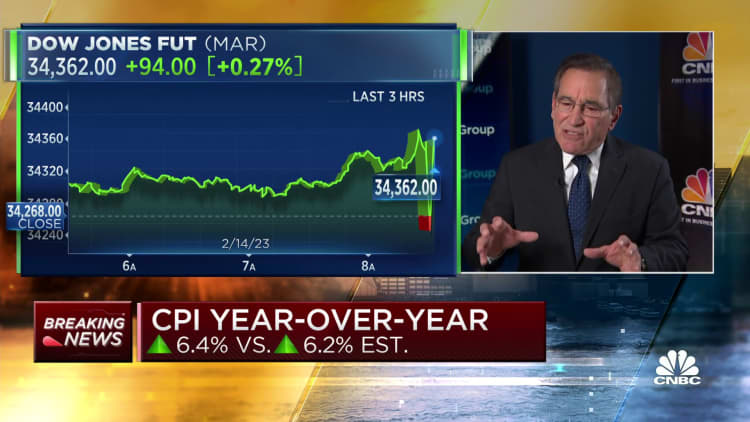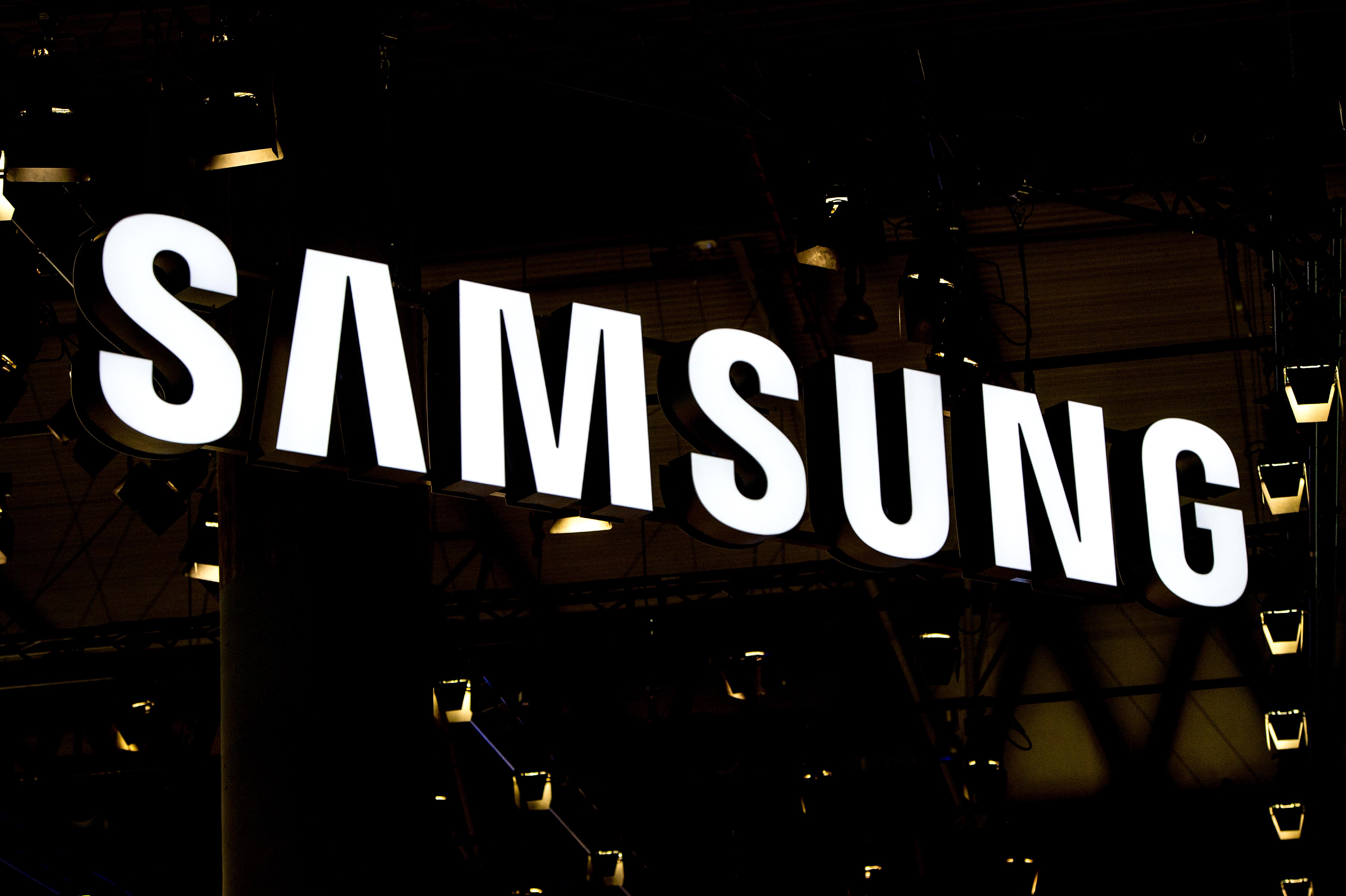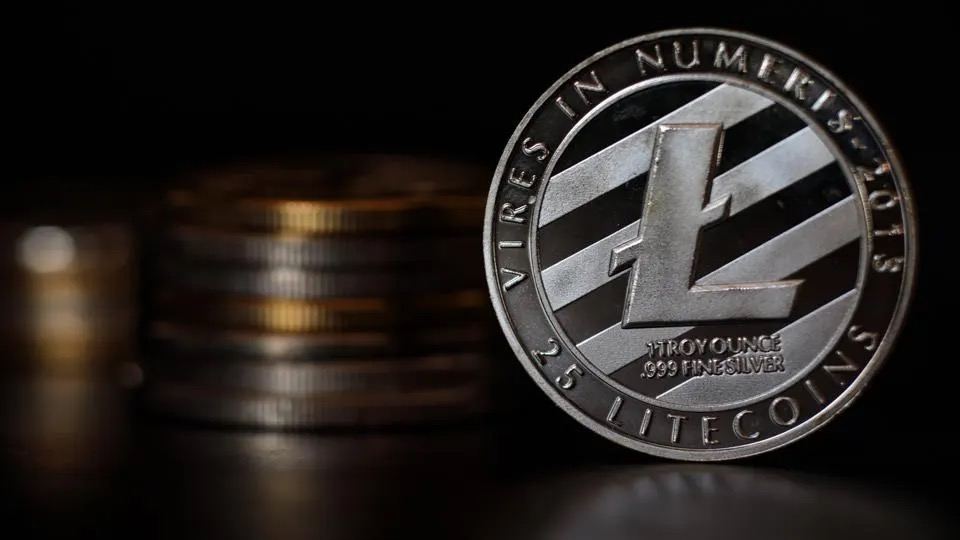Inflation rose 0.5% in January, more than expected and up 6.4% from a year ago
The consumer price index was expected to increase 0.4% in January from a month ago and 6.2% on an annual basis, according to Dow Jones.


Inflation turned higher to start 2023, as rising shelter, gas and fuel prices took their toll on consumers, the Labor Department reported Tuesday.
The consumer price index, which measures a broad basket of common goods and services, rose 0.5% in January, which translated to an annual gain of 6.4%. Economists surveyed by Dow Jones had been looking for respective increases of 0.4% and 6.2%.
Excluding volatile food and energy, the core CPI increased 0.4% monthly and 5.6% from a year ago, against respective estimates of 0.3% and 5.5%.
Markets were volatile following the release, with the Dow Jones Industrial Average down about 200 points at the open.
Rising shelter costs accounted for about half the monthly increase, the Bureau of Labor Statistics said in the report. The component accounts for more than one-third of the index and rose 0.7% on the month and was up 7.9% from a year ago. The CPI had risen 0.1% in December.
Energy also was a significant contributor, up 2% and 8.7%, respectively, while food costs rose 0.5% and 10.1%, respectively.
Rising prices meant a loss in real pay for workers. Average hourly earnings fell 0.2% for the month and were down 1.8% from a year ago, according to a separate BLS report.
While price increases had been abating in recent months, January's data shows inflation is still a force in a U.S. economy in danger of slipping into recession this year.
That has come despite Federal Reserve efforts to quell the problem. The central bank has hiked its benchmark interest rate eight times since March 2022 as inflation rose to its highest level in 41 years last summer.
"Inflation is easing but the path to lower inflation will not likely be smooth," said Jeffrey Roach, chief economist at LPL Financial. "The Fed will not make decisions based on just one report but clearly the risks are rising that inflation will not cool fast enough for the Fed's liking."
In recent days, Fed Chairman Jerome Powell has talked about "disinflationary" forces at play, but January's numbers show the central bank probably still has work to do.
There was some good news in the report. Medical care services fell 0.7%, airline fares were down 2.1% and used vehicle prices dropped 1.9%, according to seasonally adjusted prices.
The rise in housing prices is keeping a floor under inflation, though those numbers are widely expected to decelerate later in the year.
That's why some Fed officials, including Powell, say they are looking more closely at core services inflation minus shelter prices — "super core" — in determining the course of policy. That number rose 0.2% in January and was up 4% from a year ago.
Markets expect the Fed over its next two meetings in March and May to raise its overnight borrowing rate another half a percentage point from its current target range of 4.5%-4.75%. That would give policymakers time to watch for the broader economic impacts of the monetary policy tightening before deciding how to proceed. Should inflation not fall back, that could mean more rate hikes.
The next big data point will be retail sales, which hits Wednesday morning at 8:30 a.m. ET.
"The strength of core inflation suggests that the Fed has a lot more work to do to bring inflation back to 2%," said Maria Vassalou, co-chief investment officer of multi-asset solutions at Goldman Sachs Asset Management. "If retail sales also show strength tomorrow, the Fed may have to increase their funds rate target to 5.5% in order to tame inflation."
There's widespread belief that the economy could tip into at least a shallow recession later this year or early in 2023. However, the latest tracking data from the Atlanta Fed puts expected GDP growth at 2.2% for the first quarter, following a relatively strong finish for 2022.
January's CPI report will take some time to analyze, as the BLS changed its methodology in how it reports the index. Some components, such as shelter, were given higher weightings, while others, such as food and energy now have slightly less influence.
The Fed also changed how it computes an important component called owners' equivalent rent, a measure of how much property owners could get if they rented. The BLS is now placing a bit more emphasis on the pricing of stand-alone rentals rather than apartments.

 Konoly
Konoly 































